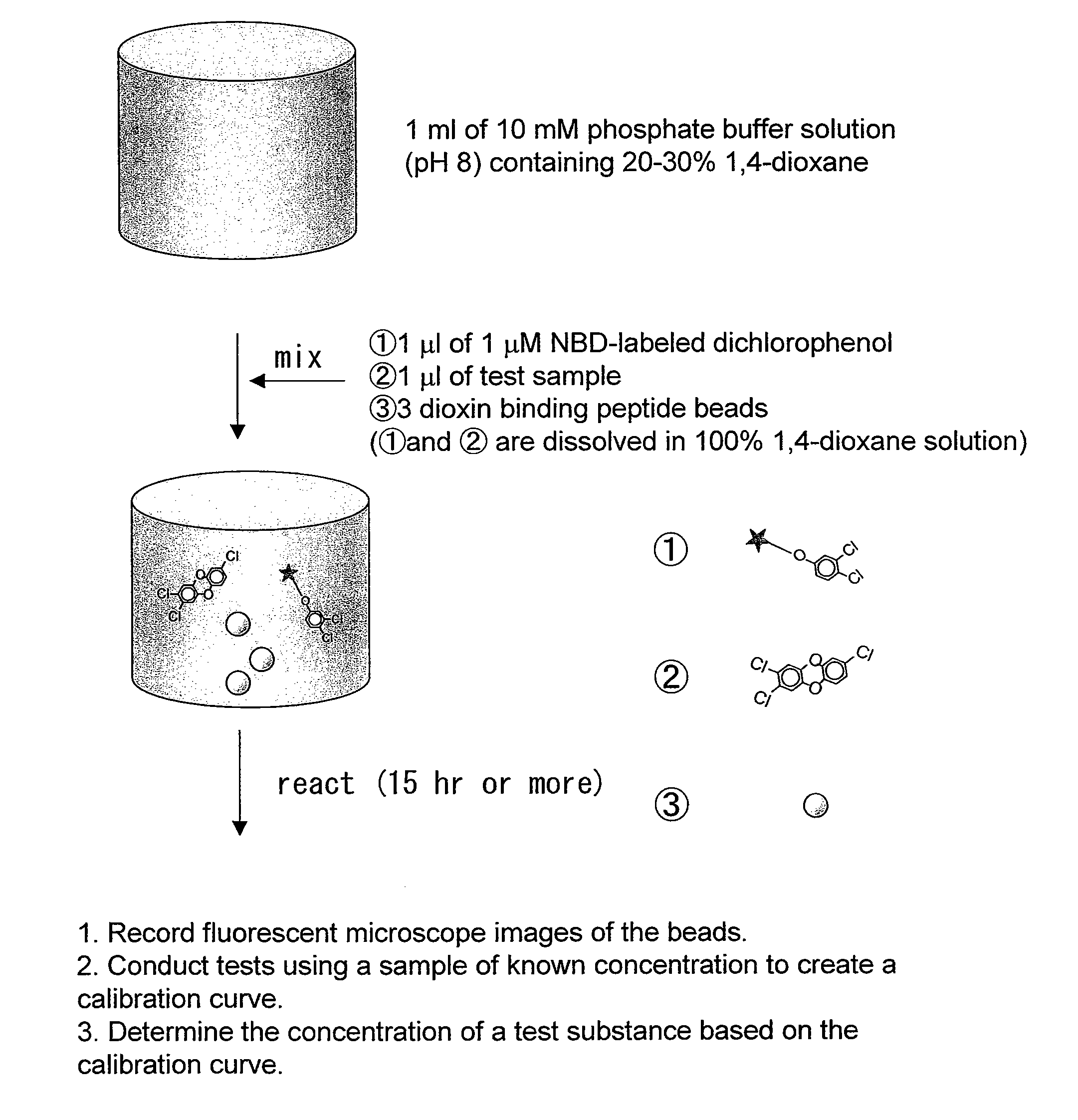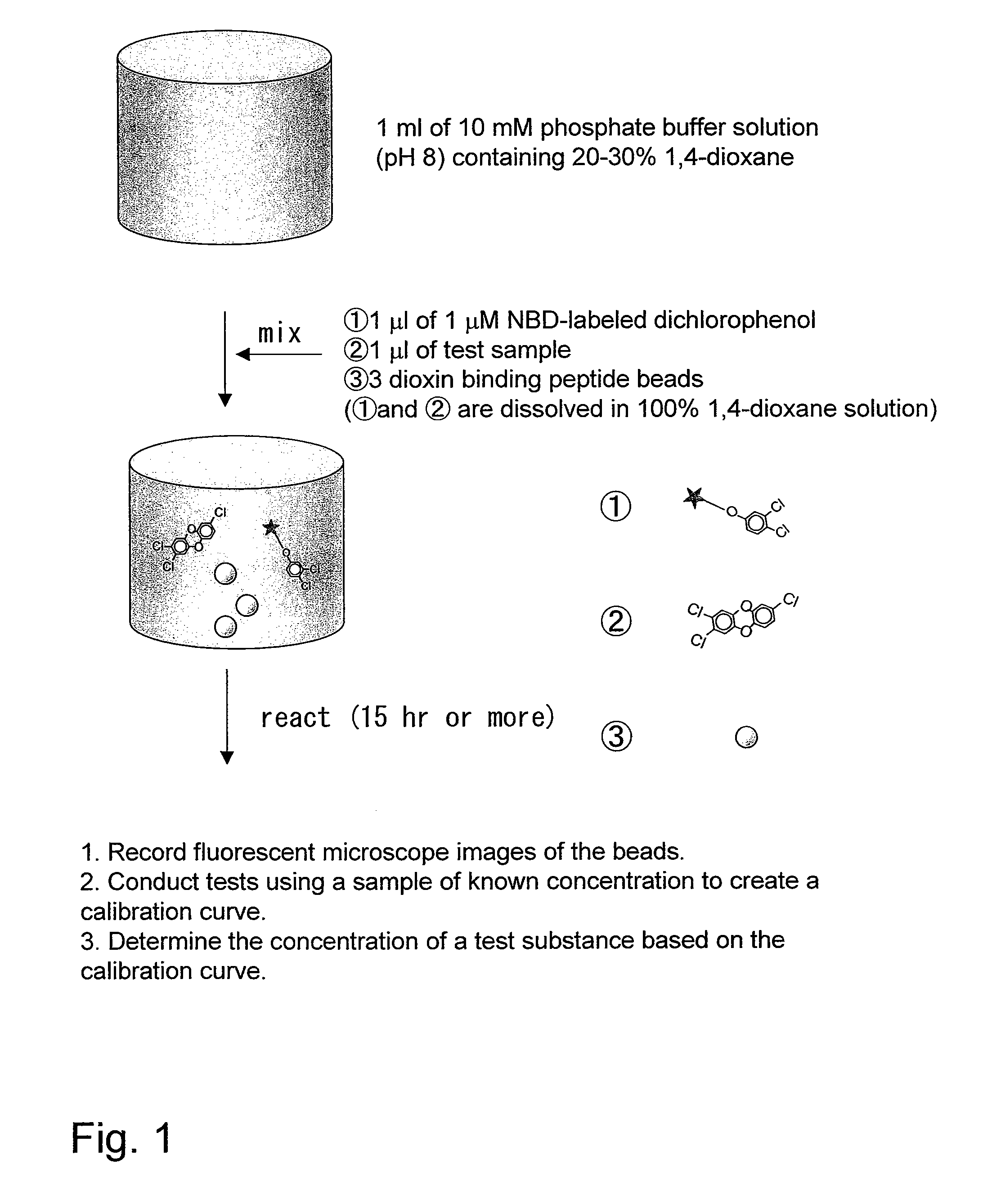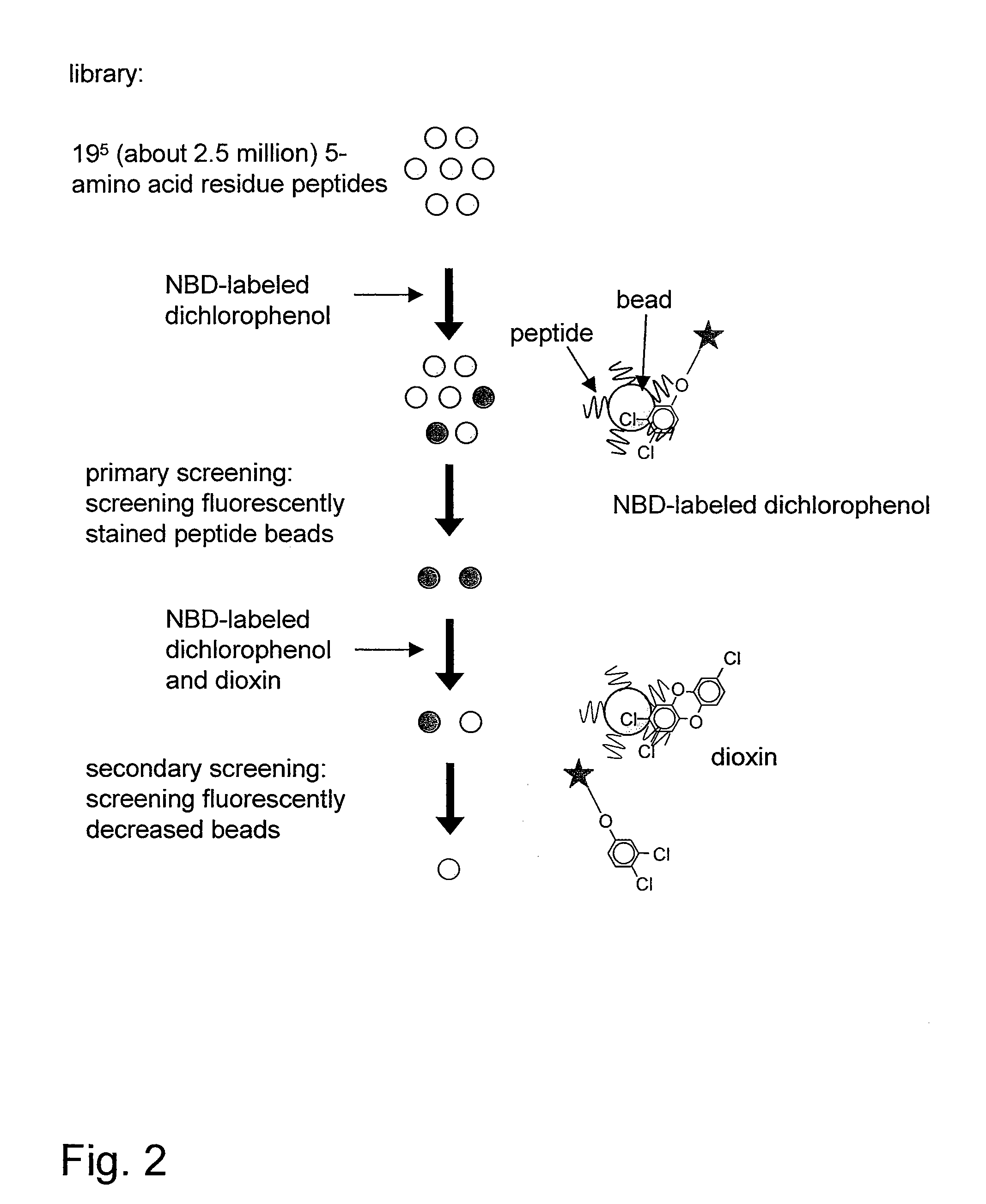Dioxin-Binding Material and Method of Detecting or Quantifying Dioxin
a dioxin and material technology, applied in the field of dioxin-binding materials and methods of detecting or quantifying dioxin, can solve the problems of difficult prompt delivery, long time, adverse effects of dioxin on living organisms, etc., and achieve the effects of rapid and simple detection or quantification, low cost, and easy confirmation
- Summary
- Abstract
- Description
- Claims
- Application Information
AI Technical Summary
Benefits of technology
Problems solved by technology
Method used
Image
Examples
example 1
Obtaining Dioxin Binding Oligopeptides
[0102]A peptide library was constructed by split-and-pool synthesis, one of the typical techniques of combinatorial chemistry, using beads for peptide solid-phase synthesis. According to the present method, a peptide of one kind of sequence is synthesized on a single bead. As shown in FIG. 2, screening consisted of two stages. Primary screening involved screening of fluorescently stained peptide beads, using a composite (FIG. 3) obtained by labeling 3,4-dichlorophenol, which has an analogous structure to dioxins, with NBD as a fluorescent material. Secondary screening involved screening of peptide beads fluorescently decreased by competition with 2,3,7-trichlorodibenzo-p-dioxin, i.e., peptide beads having an affinity to dioxin(s), from the peptide beads which were stained with the fluorescently labeled dichlorophenol.
[0103]About 2.5 million peptide beads were used for screening, the number being equal to the number of combinations of all the seq...
example 2
Evaluation of Binding Capabilities of Dioxin Binding Peptides
[0105]Using dioxin-binding peptide beads, the dioxin binding capabilities of the peptides were evaluated in terms of affinity and specificity.
Method of Competitive Dioxin Binding on Bead
[0106]1 ml of a screening solvent containing 4 nM NBD-labeled dichlorophenol and 0-100 nM of a substance to be detected was prepared in a glass vial, and then three dioxin-binding peptide beads were put into the screening solvent. The resulting mixture was incubated, with mild shaking, overnight at room temperature, and then fluorescent microscope images thereof were recorded. The average fluorescence intensity of each bead was calculated from the recorded images. Calculation of the average fluorescence intensity was performed with an image analysis / measurement software, “Image-Pro Plus” (Planetron, Inc.). When competitive binding of the dichlorophenol with a dioxin occurs, the fluorescence intensity of each bead decreases depending on the ...
example 3
Method of Detecting Dioxin by Method of Competitive Dioxin Binding on Bead
[0111]A sample of known concentration (1 μl) was reacted with 1 μM NBD-labeled dichlorophenol (1 μl) and three dioxin-binding peptide beads in 1 ml of a 10 mM phosphate buffer solution (pH: 8) containing 20-30% 1,4-dioxane. After the reaction, fluorescence microscope images of the beads were recorded to establish a calibration curve.
[0112]Next, a test sample was reacted with the labeled dichlorophenol and dioxin binding beads, and then the obtained results were compared with the calibration curve, so as to give the dioxin concentration in the test sample.
[0113]The results of the competitive quenching shown in FIGS. 6 (A) and 6 (B) can be regarded as calibration curves for dioxin detection, the results being useful in detection using the method of competitive dioxin binding on bead.
[0114]FIG. 7 shows the time required for staining. The results of the competition of 1-10 nM NBD-labeled dichlorophenol with 10 nM ...
PUM
| Property | Measurement | Unit |
|---|---|---|
| hydrophobic | aaaaa | aaaaa |
| affinity | aaaaa | aaaaa |
| gas chromatography mass spectrometer | aaaaa | aaaaa |
Abstract
Description
Claims
Application Information
 Login to View More
Login to View More - R&D
- Intellectual Property
- Life Sciences
- Materials
- Tech Scout
- Unparalleled Data Quality
- Higher Quality Content
- 60% Fewer Hallucinations
Browse by: Latest US Patents, China's latest patents, Technical Efficacy Thesaurus, Application Domain, Technology Topic, Popular Technical Reports.
© 2025 PatSnap. All rights reserved.Legal|Privacy policy|Modern Slavery Act Transparency Statement|Sitemap|About US| Contact US: help@patsnap.com



